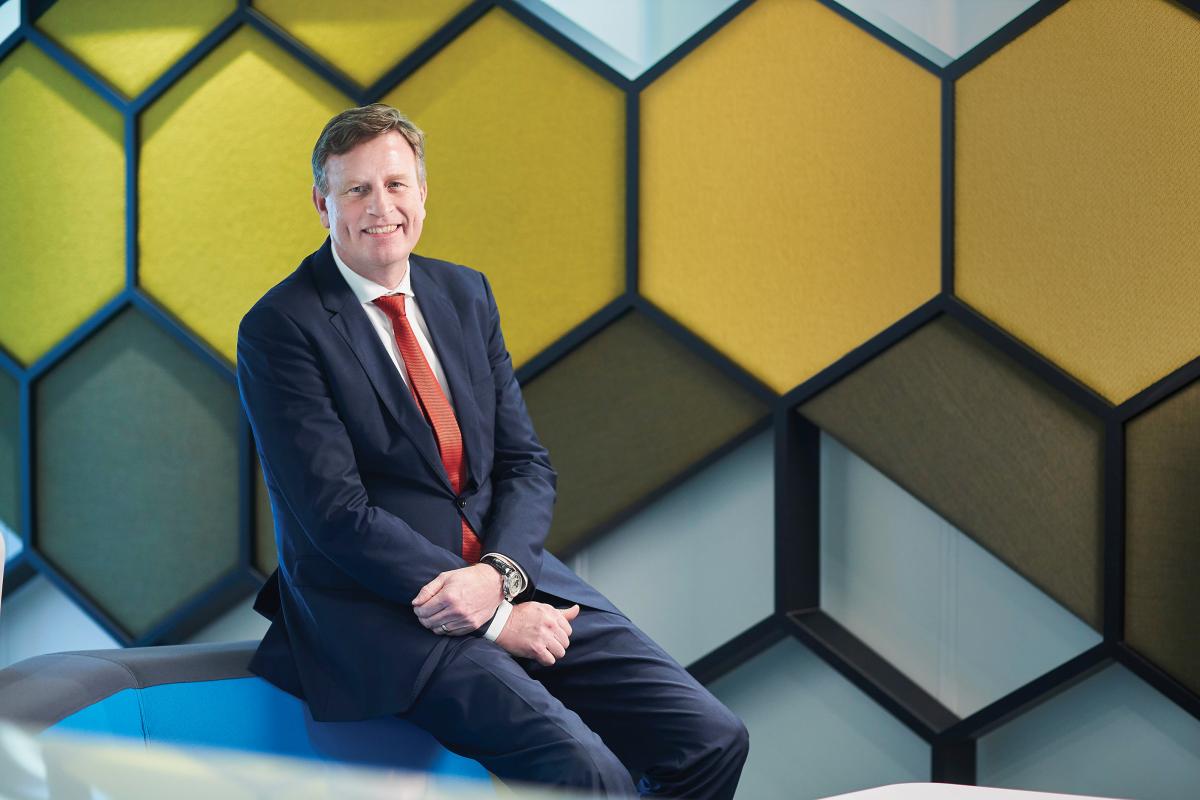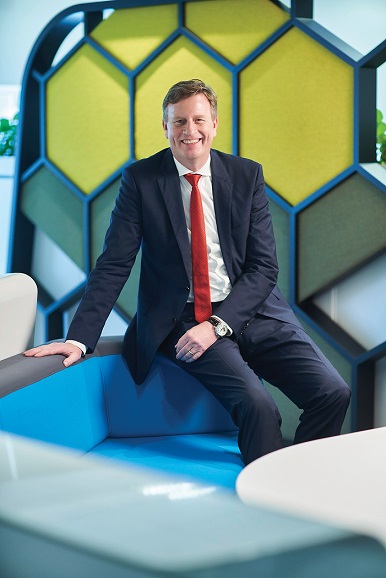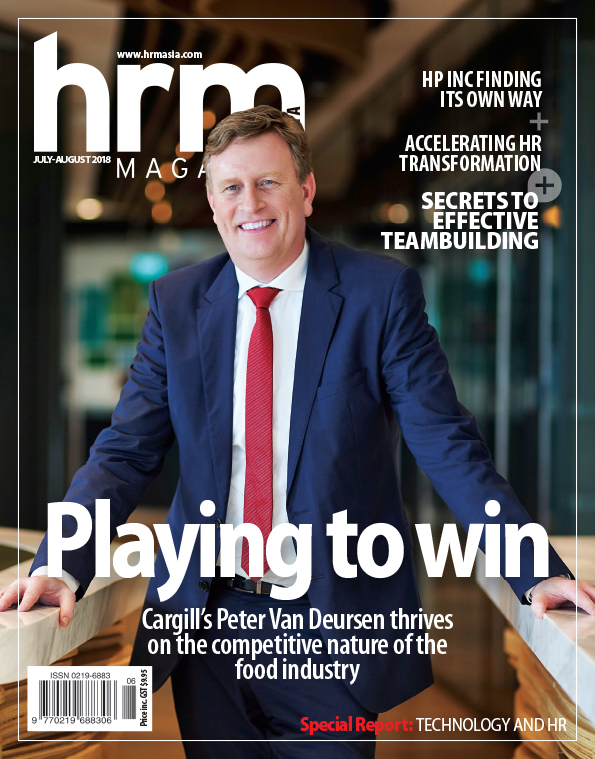Why Peter Van Deursen is always “playing to win”
In Leaders Talk HR, HRM Magazine Asia sits down with C-suite movers and shakers to talk HR and leadership.

It would be very difficult to mistake Peter Van Deursen, the CEO of Cargill Asia-Pacific, for anything other than a natural-born leader. For one thing, he is an imposing man in person – toweringly tall, sharply dressed, and straight-talking.
For another, it’s clear from his hour-long conversation with HRM Magazine Asia that he is a very competitive person: one who is always thinking about how to reach the end-game. The mantra “playing to win” is frequently cited during the conversation, and it’s easy to imagine him repeating those words to employees while holding court in Cargill’s sprawling, environmentally-friendly offices in central Singapore.
But this competitiveness should not be mistaken for aggressiveness or combativeness. Van Deursen is merely a pragmatist; one who knows that agility – rather than circumspection – is now a vital attribute for both people and organisations.
“The pace of change is faster than ever it has been before,” he says. “We have to keep thinking, how can we disrupt ourselves? If I’m running a successful business today, what can I do to disrupt that? How can I position myself to be able to adapt?”
Van Deursen acknowledges that any business wishing to be disruptive and innovative must make space for failure, “failing fast” even. But he is quick to point out that such setbacks do not represent a zero-sum game.
| “IInnovative companies fail fast, but that doesn’t mean that they continue to fail the pipeline. If you continuously fail, you go bankrupt. |
“Innovative companies fail fast, but that doesn’t mean that they continue to fail the pipeline. If you continuously fail, you go bankrupt,” he notes. “In fact, I always celebrate when we kill a project. Because, sure, the portfolio gets smaller, but it also means that we have freed up resources to deliver on that faster, in a different way.”
This bold approach might seem at odds with a company that operates in the food industry, but only if you understate Cargill’s impact as a global corporation. The company is one of the largest, privately-owned businesses in the world, and has 55,000 employees in the Asia-Pacific region alone.
As Van Deursen notes, “For most of the products that humans eat, Cargill in involved with at least one of the ingredients inside.”
Given that mandate, Van Deursen views his legacy as a leader in fairly straightforward terms.
“Ultimately, it’s not about me. It’s about developing people who can take over. If I’m leaving the company, or the region, in five or 10 years from now, there has to be a whole pipeline of people standing up, and waiting to take over,” he says.
“They don’t have to copy and paste my behaviour, but I would hope that by then we would have established a ‘playing to win’ culture that adheres to the core values of the company.”
hrmasia
The challenges of Asia
What is a typical day for you in Cargill?
A typical day in Cargill doesn’t really exist, especially in this region. A quarter of the global population in Cargill is sitting and living in Asia – and we consider Asia to be everything between India and Australia. It’s a huge territory. Some 60% of the global population lives in that space.
And those regions are all dealing with different enterprises and product lines. In the Food Ingredients and Bio-Industrial enterprise alone, you’ve got product lines such as starches and sweeteners, oils and fats, cocoa and chocolate, and malt.
Then we have our Cargill agricultural supply chain. There’s everything from trading up to buying soybeans, for instance, or animal proteins such as chicken or other meats. Then we’ve got our metals and our trading.
They’re all different businesses with different competitors, and different needs.

“If your people tell you that you’re wrong, you have to be smart enough to take their advice on and blend it with your own approach.”
What are the challenges of managing the workforce across such a diverse region?
It is just the fact that there is not “One Asia”. Asia, as a concept, is nice for statistics. But what is China, and what do we want to be there? What do we want to be in Indonesia? What do we want to do in Philippines or Vietnam? These questions will all have very different answers.
The strategies and capabilities needed are different, because the dynamics are different. In a country like India, you cannot even talk about “India strategies”, because there are so many differences between the states alone – there, you have to talk about strategies at the state level.
You’ve worked in various countries over your 28-year career with Cargill. What have you learned about how leaders should adapt to different cultures?
Surround yourself with people from different regions. I have people on my management team from China, Indonesia, and India. My communications director is from Singapore, and so she will often tell me: “You should do that differently”.
Of course, a leader has to be open enough to be able to initiate that conversation in the first place. And if your people tell you that you’re wrong, you have to be smart enough to take their advice on and blend it with your own approach.
Making a positive change
What is the state of the industry landscape for Cargill at the moment? What is the business grappling with?
We have to keep asking ourselves, what are the choices we’re making? How and where do we want to position ourselves? Things are moving fast. The world population is growing very quickly. There is more urbanisation, and more impact on the climate. Diets are changing.
In China, for example, animal protein is becoming more popular as incomes rise. Whereas in India, and some parts of the western world, there is a greater demand for vegetable protein.
All of these things present challenges, but also open huge opportunities. If diets are changing, that means we have to think about how we can offer a portfolio that caters to all appetites.
We do want to continue to facilitate free trade, and we want to be a thought leader in how climate change is tackled. We have also pledged to be completely sustainable in our supply chain. That’s a big commitment, and now we need to make sure we have the technology, policies, and partnerships to enable it.

This story was first published in the July-August edition of HRM Magazine Asia. Check out the rest of the issue here.
Is it difficult to get younger people into the business?
Farming is perhaps not as attractive in comparison to anything in the tech space. But concepts like farm-to-fork, sustainability, and deforestation are debates in which Cargill plays all the time, and they are big themes that a lot of younger people are talking about now.
More and more people are interested to know where their food is coming from and how it is being produced. So I think our appeal to the younger generation is actually increasing.
That makes sense, because studies have shown that millennials are interested in joining companies that are making a positive change in the world. Does that ring true for Cargill?
As a company, we want to be the global leader in nourishing the world in a safe, sustainable, and responsible way. That means doing things like standing up for global trade, because we believe it will result in better systems that will mean we can feed and grow the global population.
That guiding principle is very strongly rooted in the company from the Cargill-Macmillan family. You see it shining through the entire organisation, and it cascades down to everything else.




